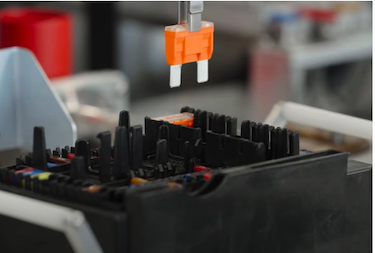By Harry Moser – Reshoring Initiative
Manufacturing output per hour in the U.S. has grown at an average of just 0.2% a year since 2009, according to the U.S. Labor Department—below the non-manufacturing U.S. sectors and the economies of Europe and Asia (Fig. 1). Productivity relies on several factors including management decisions, supply chain, and infrastructure, but workforce availability and skills are key.
The U.S. manufacturing skills-gap may result in 2.1 million unfilled jobs by 2030 with a missing jobs price tag of $1 trillion in 2030 alone. Drug abuse is exacerbating the problem.
The U.S. must have a sizable, appropriately skilled workforce to take advantage of new technologies that boost competitiveness, close the cost gap, and enable reshoring. America can save lives, increase productivity, and reshore more by cutting drug abuse.
A Frustrating and Dangerous Dilemma
Drug use/addiction is a frustrating and dangerous dilemma for U.S. manufactures and America as a whole. The problem adds to U.S. manufacturers’ labor challenges including its aging workforce, skills gap, and record low unemployment rates, not to mention its potential for workplace injury. It also presents a negative perception of the American labor force to companies that are interested in foreign direct investment (FDI) into the US.
GDP depends on the size of the skilled workforce and productivity. Trends in global drug use and production tell us that drug use is up nearly 25% over the past decade. The U.S./North America is tied for the highest drug use, way above Asia.
Much of the drug problem is with opioids. A significant percentage of opioid addicts turned to the drug due to depression when the leading employer in their small town shut and the work was offshored. Reshoring to that town will help prevent future drug addictions and, perhaps, restore hope and health in some workers.
A recent report from the Substance Abuse and Mental Health Services Administration shows 1 in 10 manufacturing workers report heavy alcohol use; 1 in 13 report illicit drug use within the past month; and 1 in 11 report drug/alcohol dependence during the past year.
This is consistent with the frequent message that many potential hires are rejected due to drug usage. Cutting drug usage would be a way to give the U.S. a larger, more productive workforce, enabling reshoring while also saving lives and helping communities.
The Cost of Substance Abuse
The National Council on Alcoholism and Drug Dependence (NCADD) estimates that substance abuse costs employers $81 billion annually through lost productivity and absenteeism, turnover and recruitment costs, workplace accidents, health care expenses, and disability and workers’ compensation. America’s drug problem is a factor that is impacting employers’ ability to find the quantity and quality of workers needed to sustain growth. And communities with substance abuse histories many times are crossed off site selector’s lists.
Addressing the Problem
Drug testing is essential, but it is also essential to ensure employees with substance use disorders receive the help they need. Employee Assistance Programs (EAPs) should be voluntary, confidential services that can help employees who are struggling with addiction to get counseling, referrals, and other resources. Addressing substance abuse is a win/win for both employers and employees by improving job performance and creating a safer work environment.
Companies should maintain an open and proactive position regarding substance abuse. Company policies and resources should be clearly stated and made available in advance. Some considerations include a working definition of substance abuse, ensuring privacy and confidentiality in handling cases, educational and training resources, and plans for assistance. Additional resources can be found at www.recoverycentersofamerica.com
Reshoring and Workforce
The goal of reshoring is to strengthen domestic manufacturing. However, a lack of skilled workforce slows or caps the trend. Simply put, businesses will locate where they can find skilled workers. A healthy, skilled workforce lays the foundation for a broad range of manufacturing economic development and thriving communities.
Are You Thinking About Reshoring?
The Reshoring Initiative’s main mission is to get companies to do the math correctly using its free online Total Cost of Ownership Estimator (TCO). By using TCO, companies can better evaluate sourcing, identify alternatives, and even make a case when selling against offshore competitors. For help, contact me at 847-867-1144 or [email protected].
WHN would like to thank the folks at Casting Source, a publication of the American Foundry Society, for the permission to share this article. Castingsource.com.































































